
Matt Palmer
Head of Developer RelationsThe vibe coding philosophy
Vibe coding is less about writing every line of code and more about guiding AI tools with your vision and domain knowledge. It’s an iterative process of prompting, reviewing, and refining. Key takeaways from the video:- Conceptualize First: Start with a clear idea of what you want to build. Visualizing the end product helps, especially when prompting AI.
- Domain Knowledge is Power: Knowing relevant frameworks (like Leaflet.js for maps) or data sources (like OpenStreetMap) significantly improves AI-generated results.
- Iterative Development: Expect to debug and refine. AI tools are powerful, but they’re collaborators, not magic wands.
Project: San Francisco parks map
The goal is to build an interactive map displaying parks and public spaces in San Francisco. Problem Statement: The goal is an interactive map to discover parks and public spaces in San Francisco. Solution: An interactive tool using Leaflet.js and OpenStreetMap data. Key lessons:- Prompting AI effectively.
- Processing external data.
- Debugging and handling errors.
Building with Replit Agent
Replit Agent can scaffold entire projects, set up environments, and generate initial code.1
Crafting the Initial Prompt
A good prompt is specific. We tell Agent:To learn more about how to write effective prompts, check out this article.
- The goal: “Help me create a minimalist maps app to visualize San Francisco’s parks.”
- Key technologies: “You should use leaflet for map visualization and fetch data from OpenStreetMap.”
- Specific data types from OpenStreetMap (after research): Natural formations (woods, beaches, islets, cave entrances) and leisure locations (parks, gardens).
2
Attaching a Mockup
Visual aids help Agent understand the desired layout and features. A simple sketch or mockup can be attached directly to the prompt.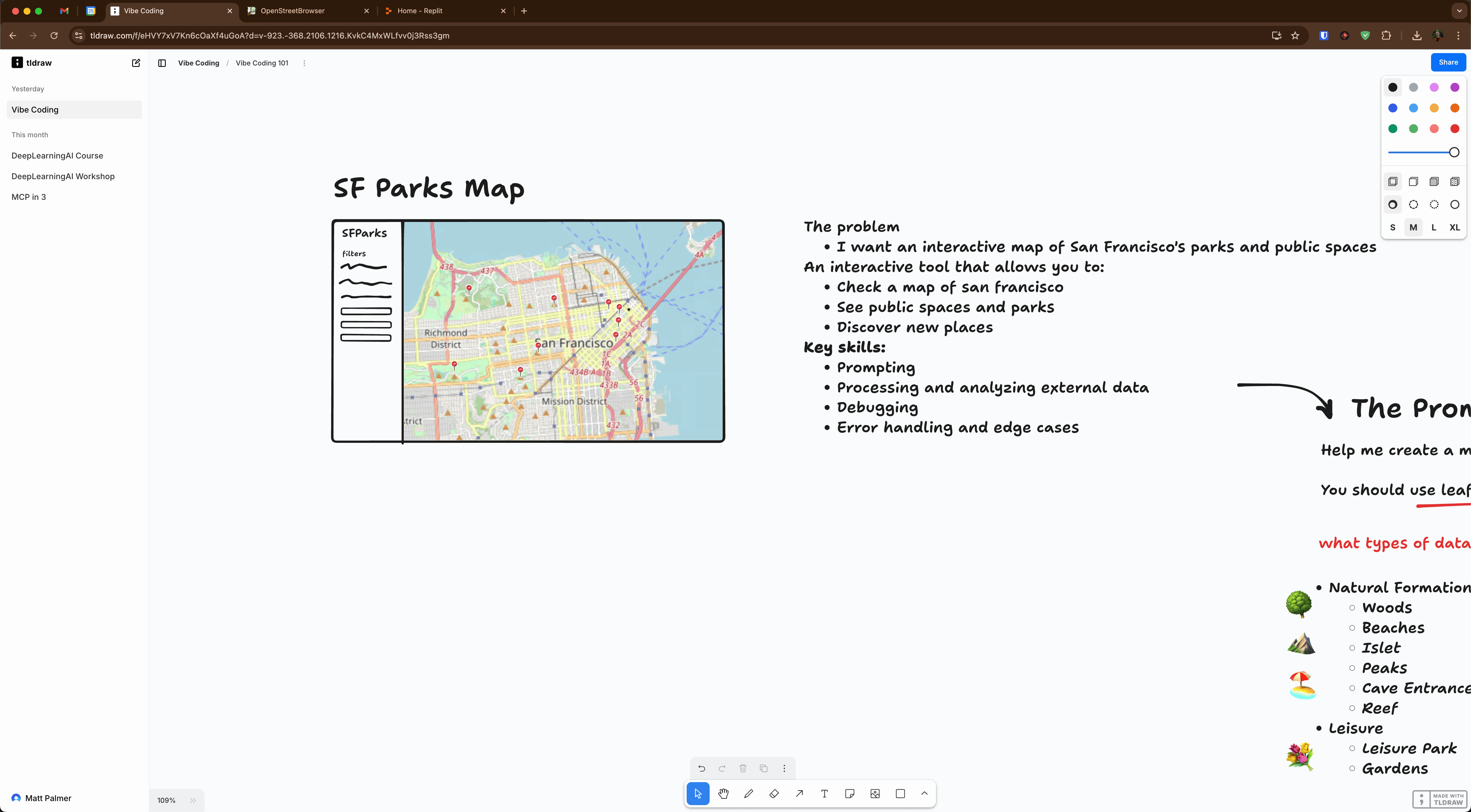

3
Agent's Process
-
Plan Creation: Agent outlines the steps it will take. Review and approve this plan.
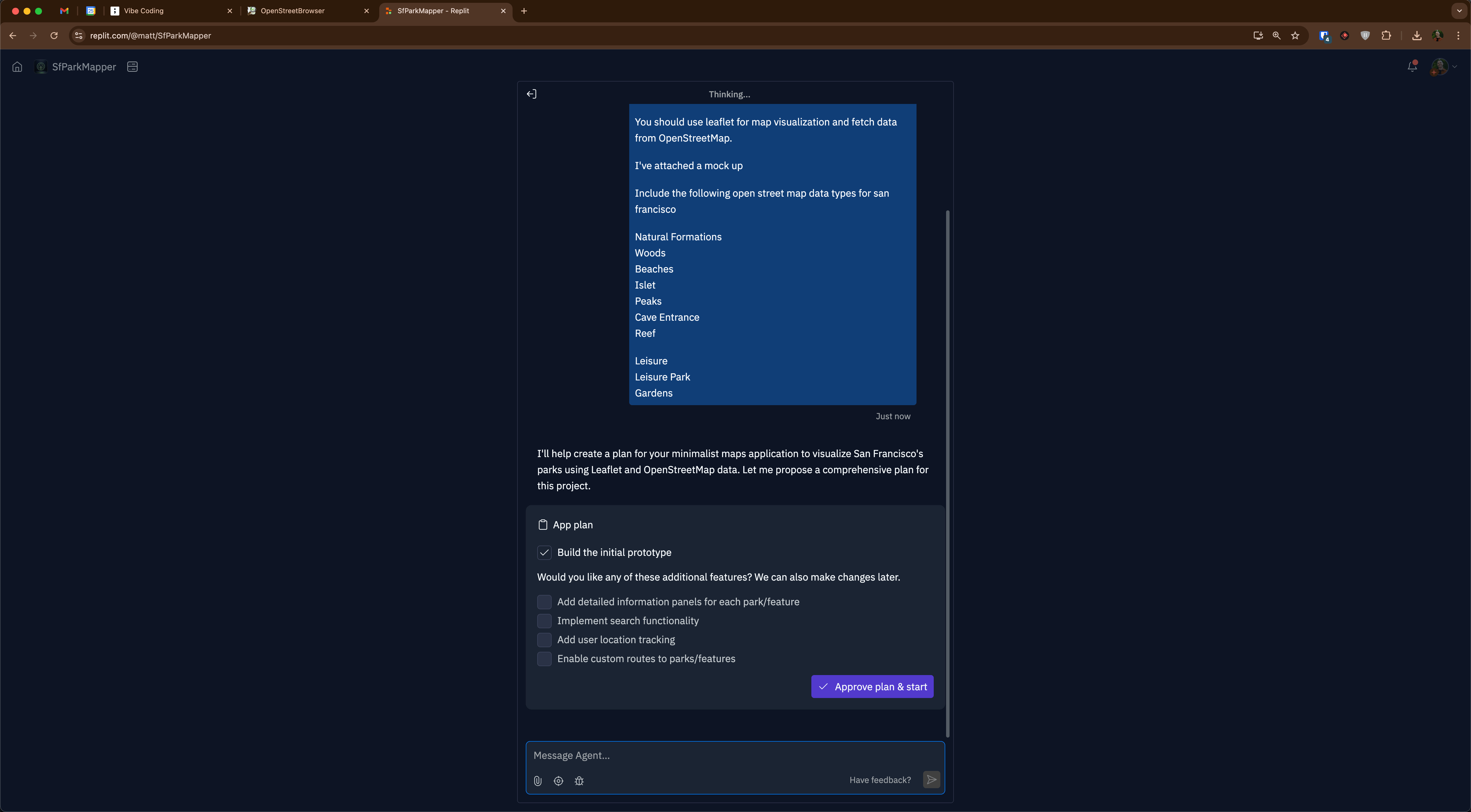
-
Visual Preview: Agent streams a visual preview of the app’s UI.
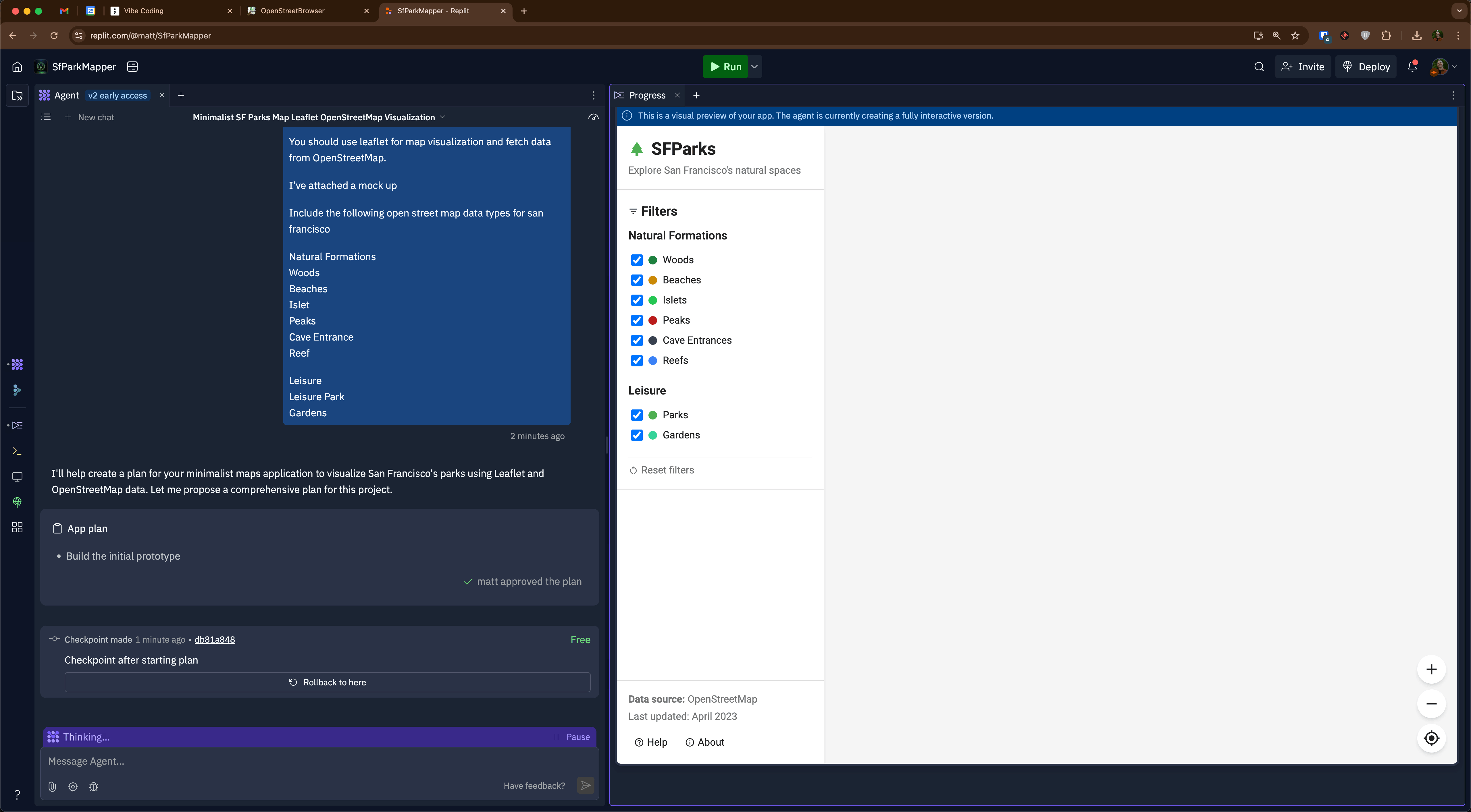
- Environment Setup: Agent configures the development environment, installing necessary languages and packages—no manual setup required.
- Building the App: Agent writes the code for the front end and back end.
- Checkpoints: Agent creates checkpoints (Git commits) so you can roll back if something goes wrong.
4
Debugging with Agent
Errors happen. Use the browser’s DevTools (specifically the Console and Network tabs) to find error messages.
- Observe: The map loaded, but no data points appeared.
- Investigate: The console showed an error: “Failed to fetch map features error cannot read properties of undefined reading natural.”
-
Inform Agent: Paste the error message directly into the chat with Agent. Agent will attempt to debug and fix the issue.
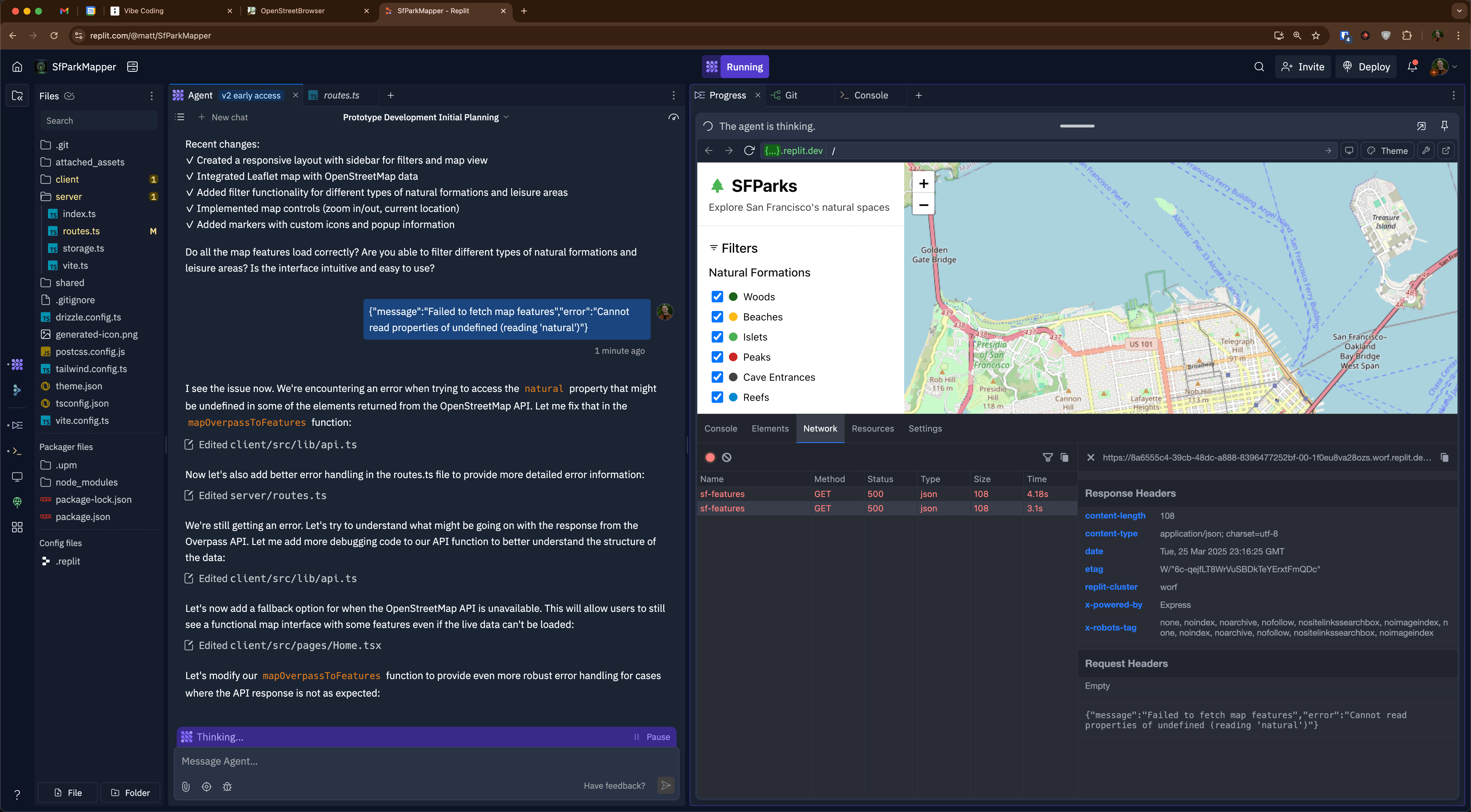
Refining with Fast mode
Once Agent builds the MVP, use Fast mode for smaller, more targeted edits and refinements. Fast mode is optimized for quick changes.Improving Map Styling
Improving Map Styling
The initial map was functional but could look better.
Prompt to Agent: “Can you use a more minimalist carto style for OpenStreetMap? Carto lite.”This relies on knowing that “Carto lite” is a known theme for Leaflet maps.
Adding Dark Mode
Adding Dark Mode
A common refinement is adding a dark mode.
Prompt to Agent: “Can you add a dark mode to my app and use, carto dark for the map in the dark mode?”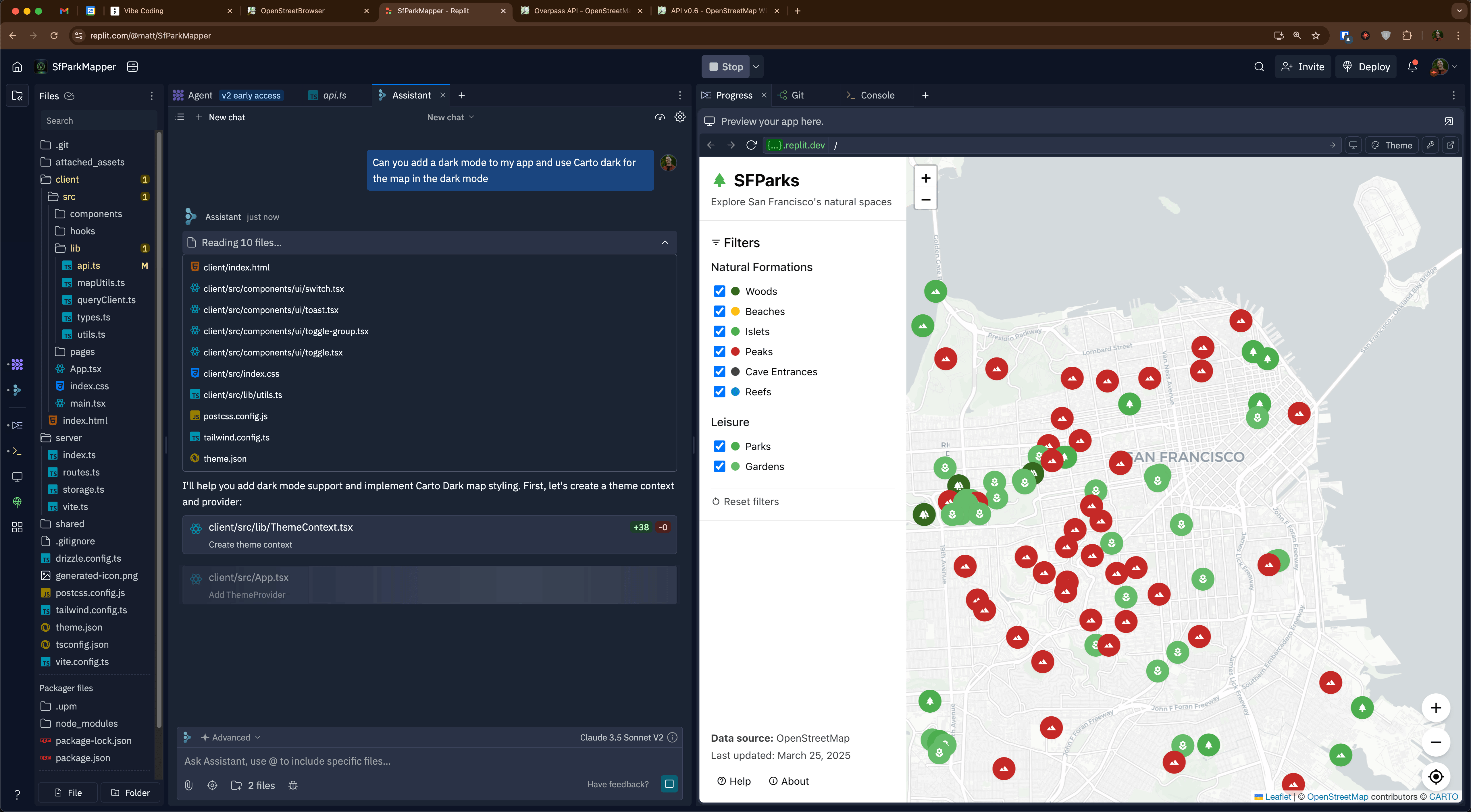

- Read files for context.
- Make changes to necessary files (e.g., theme providers, styles).
- Restart the app to apply changes.
Iterative Debugging with Agent
Iterative Debugging with Agent
Adding dark mode involved several iterations:
- Initial implementation had a toggle that worked for the map but then disappeared. Feedback: “The toggle theme button works for the map, but it disappears when clicked. The theme toggle should be in the side nav and the theme should be applied to the side nav.”
- Issues with multiple toggle buttons and incorrect component references (
side navvs.sidebar). Feedback & Guidance: “Now there are two toggle themes. One controls the map, the other controls the side nav. Make them into one in the side. Now and update the CSS.” When Agent made an incorrect assumption (e.g.SideNavcomponent), explicitly pointing it to the correct file (@Sidebar) helps. - Final fix to ensure the dark mode toggle in the sidebar correctly toggled the map theme to Carto Dark. Feedback: “Now the dark mode toggle in @Sidebar does not toggle the map to carto dark.”
Publishing your application
Replit makes publishing straightforward.- Select the Publish button.
- Agent suggests a publishing configuration (e.g., app name, build and run commands). Review and confirm.
- If your app uses API keys or other sensitive information, store them in Secrets. Agent will use these securely.
-
Select Publish. Replit bundles your app and makes it live on the web.
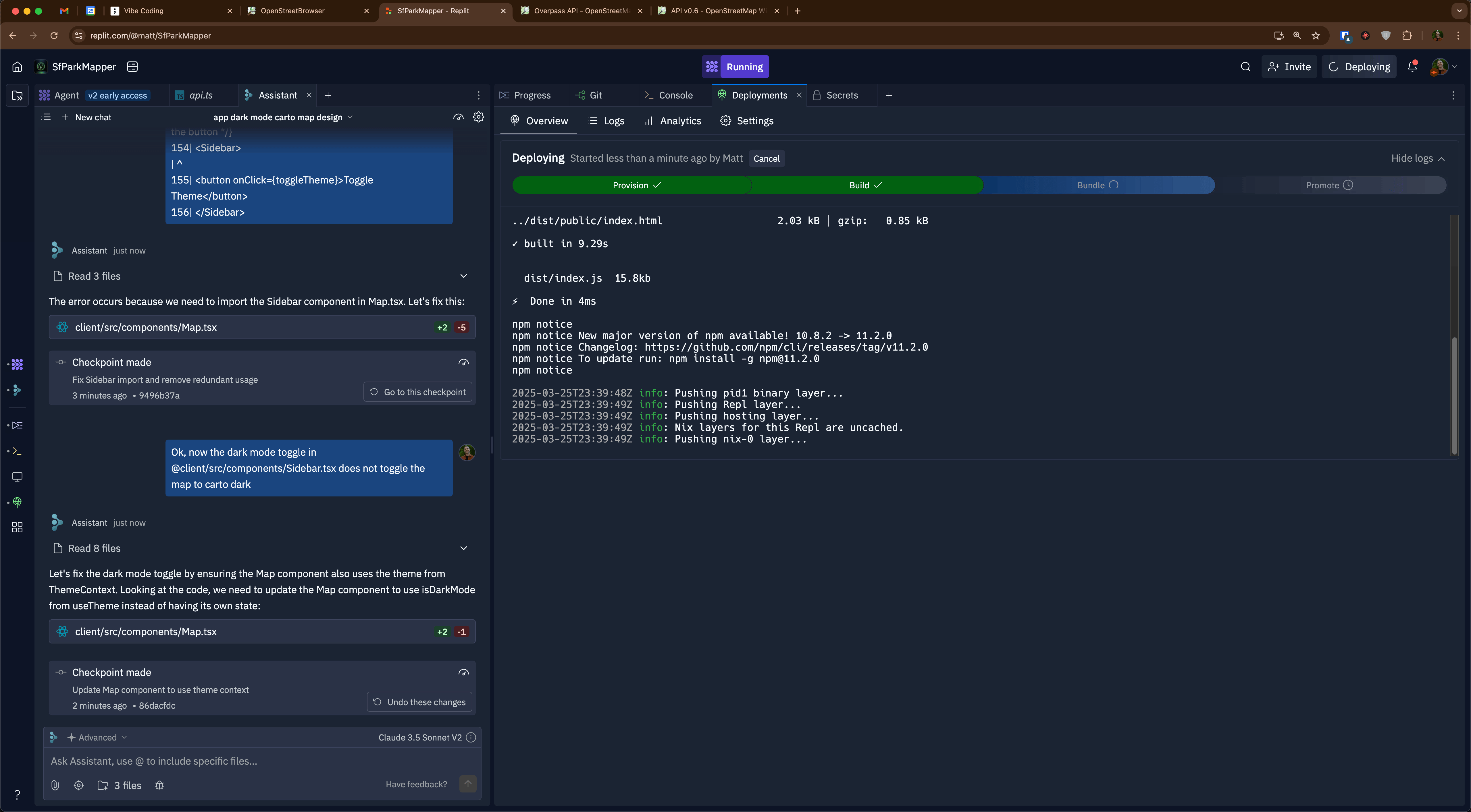
park-mapper.replit.app). Changes made in your development environment won’t affect the published version until you click Republish.
Recap and next steps
This tutorial went from an idea to a published interactive map application without writing a single line of code manually. Replit Agent was used for the heavy lifting, with Fast mode for refinements, leveraging domain knowledge and an iterative debugging process. Potential Next Steps for the Park Mapper App:- Add a database to store park data persistently (avoiding re-fetch on every load).
- Allow users to save or favorite parks.
- Implement advanced filtering.
- Improve styling and add custom icons for map markers.
- Enhance mobile responsiveness (e.g., ensuring filters are accessible on mobile).